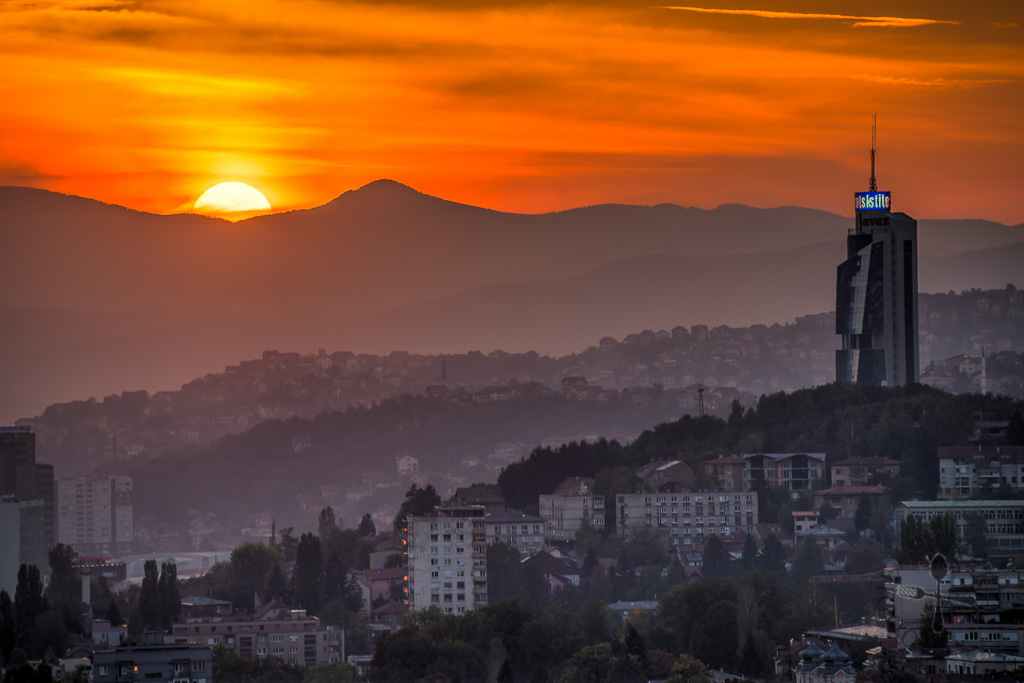
Our first stop during our Balkans trip is Sarajevo, the capital of Bosnia and Herzegovina. Before I start on the things to do in the city, let me share about the brief history of Sarajevo. (If you want to skip the history, click here.)
Note: Info (including address and opening hours) are accurate as at Mar 2017. Please Google and confirm the details before your trip!
Brief History of Sarajevo
There it seems to man that he can live for a long time
For in a thousand places in Sarajevo flows water from the well of longevity
– unknown Sarajevan poet
Ottoman 1463 – 1878: The Sarajevo we know today was founded by the Ottoman Empire in the 1450s. The Ottoman ruled for almost 500 years – resulting in a huge influence in food, culture, tradition, language and religion. Under the Ottoman rule, Sarajevo was once one of the most advanced cities in Europe with its own water system, clock tower, bathhouses and schools. It was also a city of four religions – Islam, Christian, Orthodox and Jewish, giving the city the name “The European Jerusalem”. Towards the end of the Ottoman era, Sarajevo was desolated by fire, plague and political turmoil.
Austria-Hungary 1878 – 1914: The Austria-Hungary occupied Bosnia in 1878 and architects and engineers were endeavoured to rebuild Sarajevo. An unexpected fire aided them as it burned down a large part of the central city area – hence the architecture today is a blend of Ottoman and contemporary western. During this period, Sarajevo witnessed tremendous advancement such as the construction of trams and theatres. The Austria-Hungary era came to an end when the Archduke Franz Ferdinand of Austria and his wife, Sophie, were assassinated in Sarajevo on 28 June 1914, which triggered the outbreak of World War I.
Yugoslavia 1918 – 1992: At the end of World War I, Sarajevo became part of the Kingdom of Yugoslavia. As the kingdom was based in Belgrade, there was minimum progress in Sarajevo. After World War II, Bosnia came under the rule of the Socialist Federal Republic of Yugoslavia. Under the rule of Josip Broz Tito, Sarajevo experienced economic expansion and advancement, making Tito a well-loved politician. However, after Tito’s death in 1980, the political struggle ensued led to the declaration of independence of Bosnia and Herzegovina from Yugoslavia on 3 March 1992.
War is no joke, it seems. It destroys, kills, burns, separates, brings unhappiness.
– Zlata’s Diary: A Child’s Life in Wartime Sarajevo by Zlata Filipović
Bosnian War (Siege of Sarajevo) 1992 – 1995 and today: There were three main ethnic groups in Bosnia and Herzegovina, the Bosniaks, Croats and Bosnian Serbs. Some Bosnian Serbs were against the independence of the country as they wanted the country to stay with the Serb-dominated Yugoslavia. Violent incidents began to occur in Bosnia, triggering the Bosnian War on 6 April 1992 which lasted for 3 years. In Sarajevo, the Serb nationalists, with the help of Serbia, surrounded Sarajevo in the nearby hills and assaulted the city with artillery, tanks and small arms (known as the Siege of Sarajevo). The siege finally ended after US-led NATO airstrikes against the Serbian forces, but not before taking away the lives of more than 200,000 people. The mortar shells’ explosions in Sarajevo that resulted in one or more deaths were later filled with red resin – a concrete scar and memorial now known as Sarajevo Rose. Today, with the help of foreign aid, Sarajevo is on the route to recovery and is now becoming a popular travellers’ destination – and here are 15 things that one can do in Sarajevo!
1) Start the Day with Burek
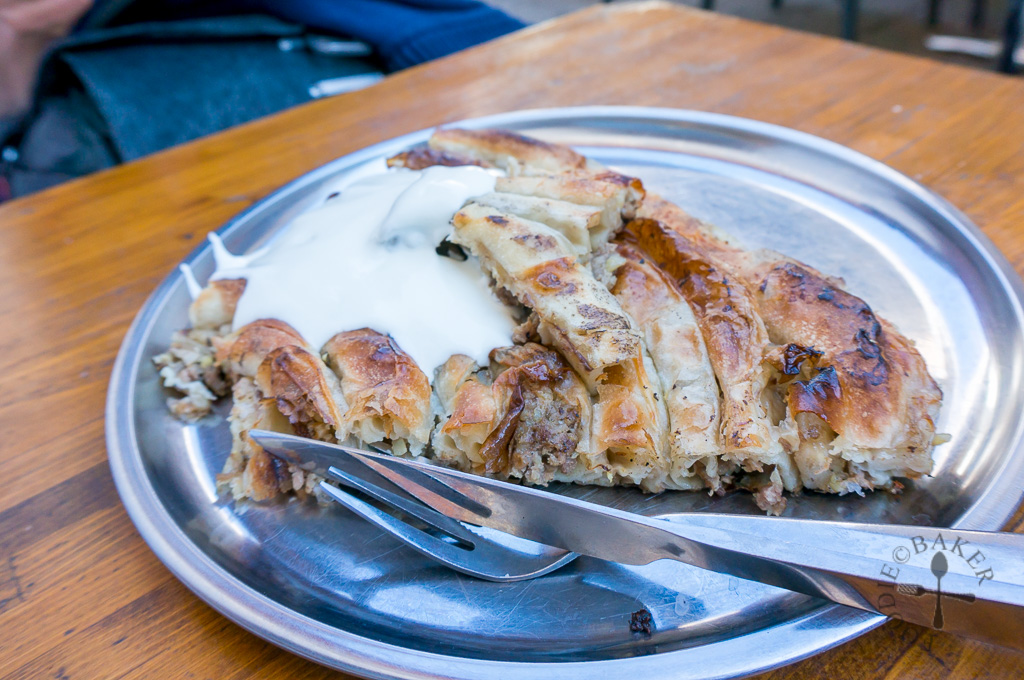
Börek is a type of baked pastry made with filo dough stuffed with a filling with Anatolian origins (now known as modern Turkey). It is popular throughout the Balkans, Mediterranean and Eastern Europe. In Bosnia, this pastry is known as burek and we had this warm flaky deliciousness twice in a small crowded shop Buregdzinica Sac. The shop was crowded most of the times – even during non-meal times, there would be people streaming in for a bite. Inside the shop you would see huge pans of bureks, all stuffed with a different filling. We went for the traditional meat burek and as language was a barrier, we ordered the burek inside the shop from the staff directly (by pointing at the burek we wanted). Remember to ask for sour cream if the staff didn’t add it on your burek because it goes so well with the burek!
Bravadžiluk mali 2, 71000 Sarajevo
Daily 0830 – 2000; closed on Sundays
BAM4 per burek
2) Go For A Walking Tour
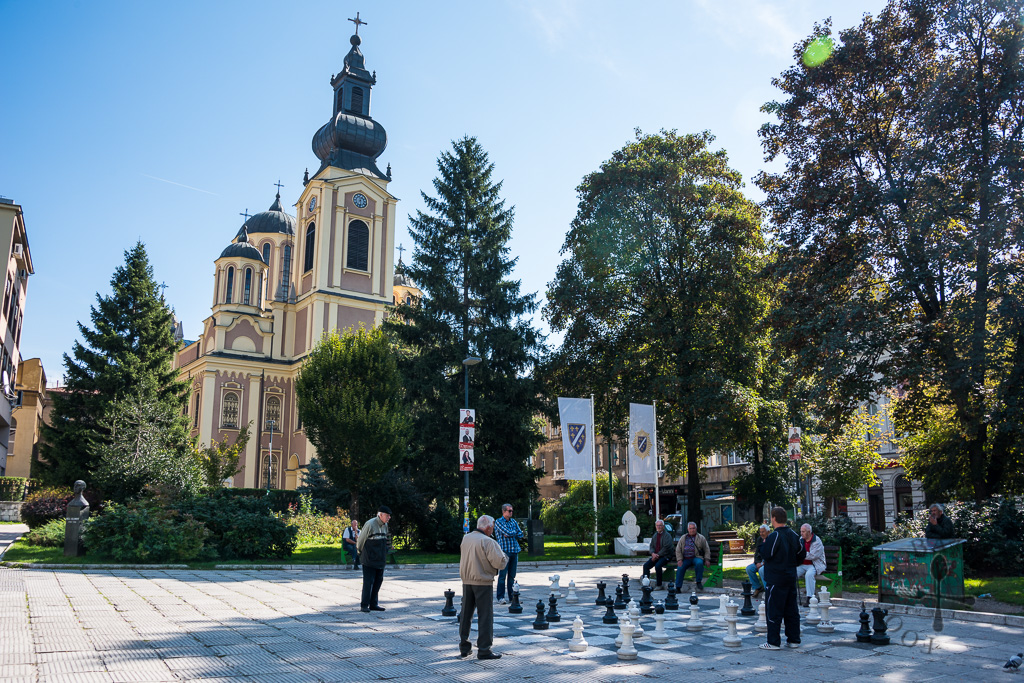
We signed up for a walking tour and it was one of the most informative and engaging walking tours I had been on. Starting at 10 in the morning and lasting for about 2.5 hours, our guide, Neno, shared with us the history and advancement of Bosnia and Herzegovina, the significance of the buildings and certain landmarks in Sarajevo, and also his first-hand experience during the Siege of Sarajevo.
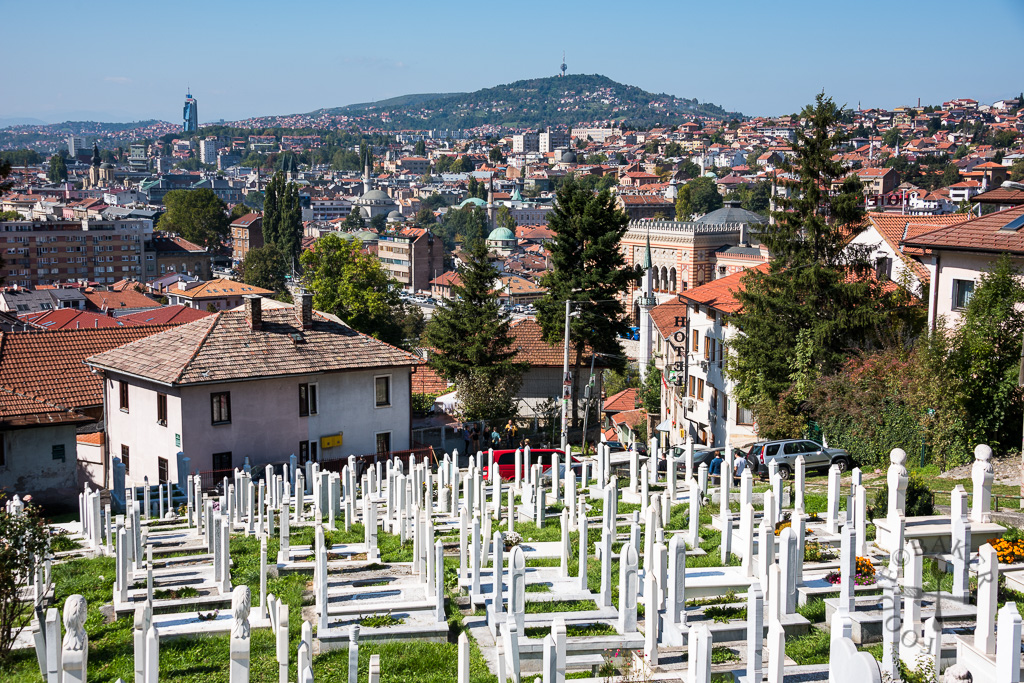
3) Inat Kuća (House of Spite)
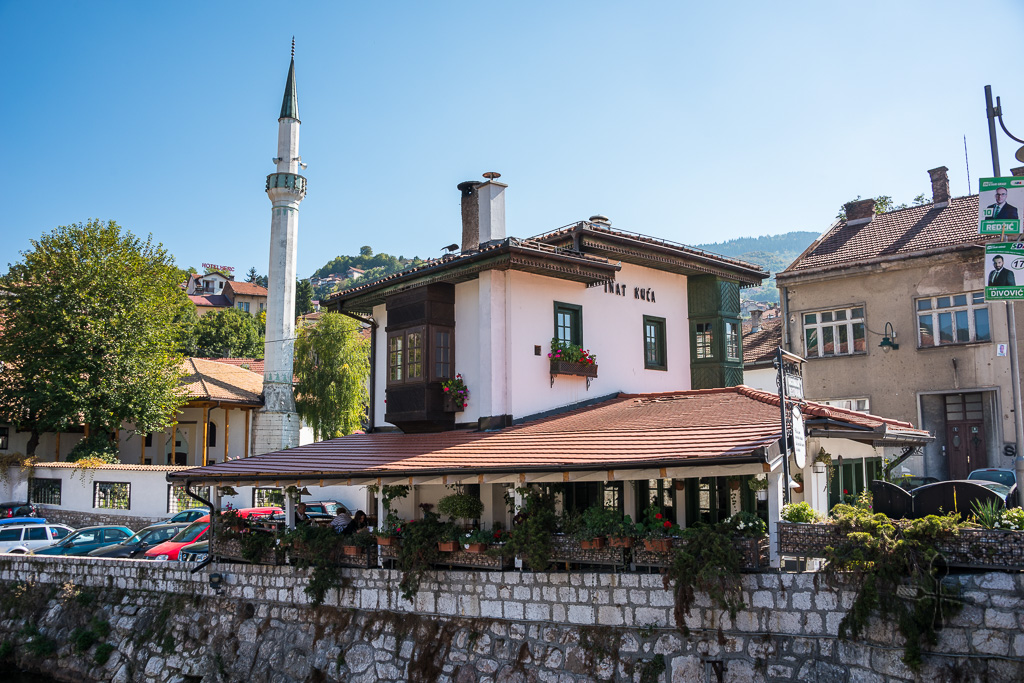
Our walking tour ended at Inat Kuća (House of Spite), a building with a pretty interesting history. In 1892, when the Austro-Hungarian officials were clearing the land to commence the construction of a new city hall, they found that one of the landowners, an elderly Bosnian named Benderija, refused to leave the land, even though the compensation was hefty. Benderija finally agreed to sell the land in 1895, after getting the authorities to rebuild his house, brick by brick, on the other side of the river (and of course he still got a huge compensation on top of that!) Hence that’s how its name, Inat Kuća, came about. The building was converted into a Bosnian restaurant in 1997 but we didn’t get to try the food there.
Veliki Alifakovac 1, 71000 Sarajevo
4) Vijećnica, Sarajevo City Hall
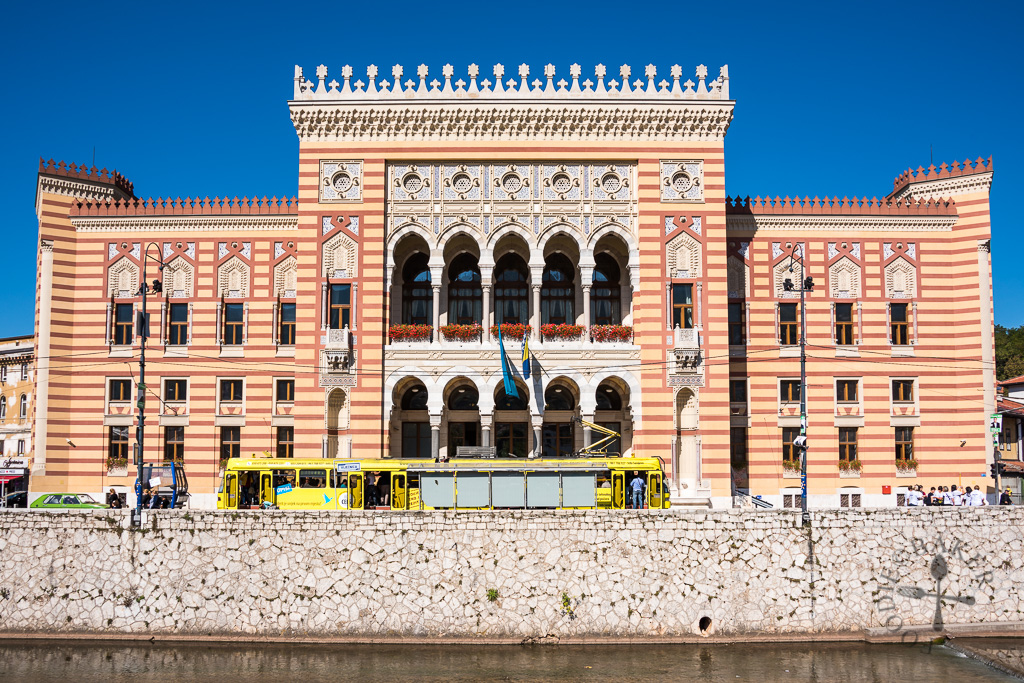
This extravagant building seemed a little out of place at first because of its distinctly unique and different architecture from the rest of Sarajevo – a result of the Austro-Hungarian rule. The first building was completed and officiated in 1896 as the City Hall until 1949, which was then converted into the National Library. Unfortunately, the Siege of Sarajevo resulted in the complete destruction of the library and the loss of many books, rare manuscripts and publications. The building was rebuilt after the siege and was completed in 2014, and now serves as a national monument, hosting special events.
Obala Kulina bana 1, 71000 Sarajevo
5) Enjoy Local Bosnian Cuisine
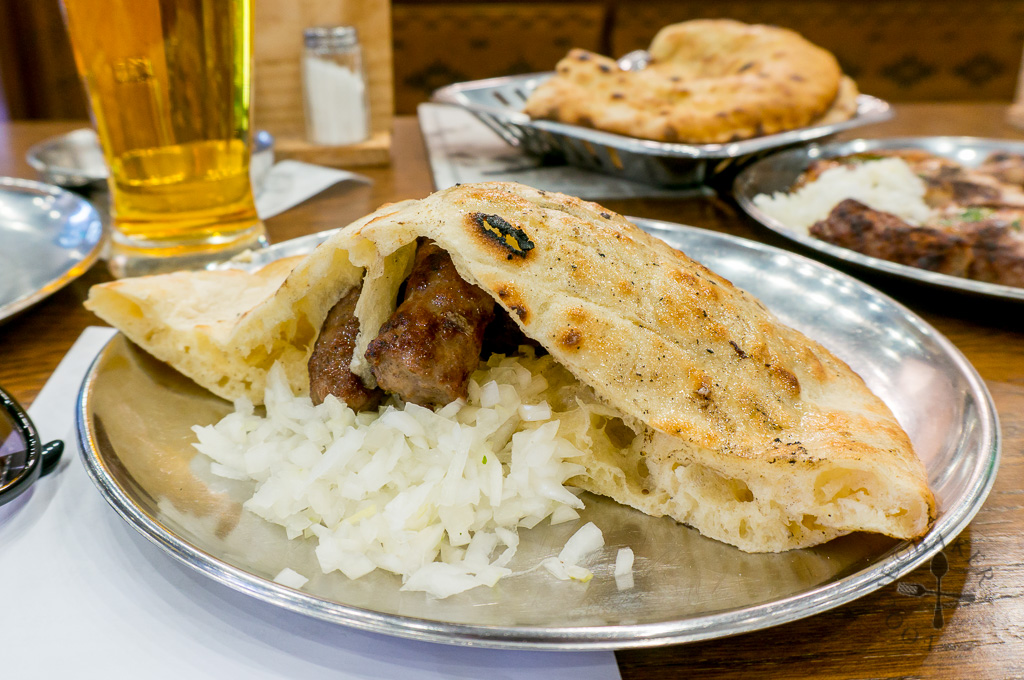
Our stomachs were rumbling after the walking tour – so we headed to Bravadžiluk street for another Bosnia and Herzegovina’s specialty – ćevapi! However, we found that the restaurant we wanted to visit was too packed, so we walked further down and stumbled upon Ćevabdžinica Hodžić, another restaurant that looked popular (it may be because it’s lunch time).
Ćevapi is a grilled dish of minced meat (usually beef) shaped like a sausage, made popular since the Ottoman period. There’s also a similar dish in Turkey but it’s called şiş köfte, and usually consist of minced beef and lamb. The ćevapi and the other grilled meat we ordered tasted pretty good, though the wait staff was a little unfriendly.
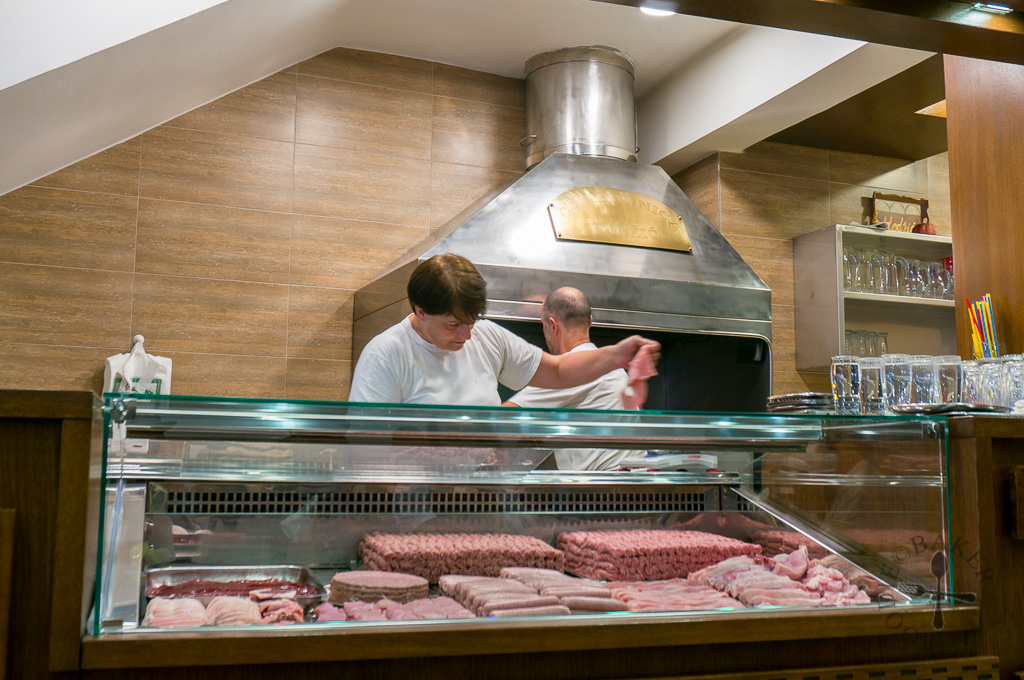
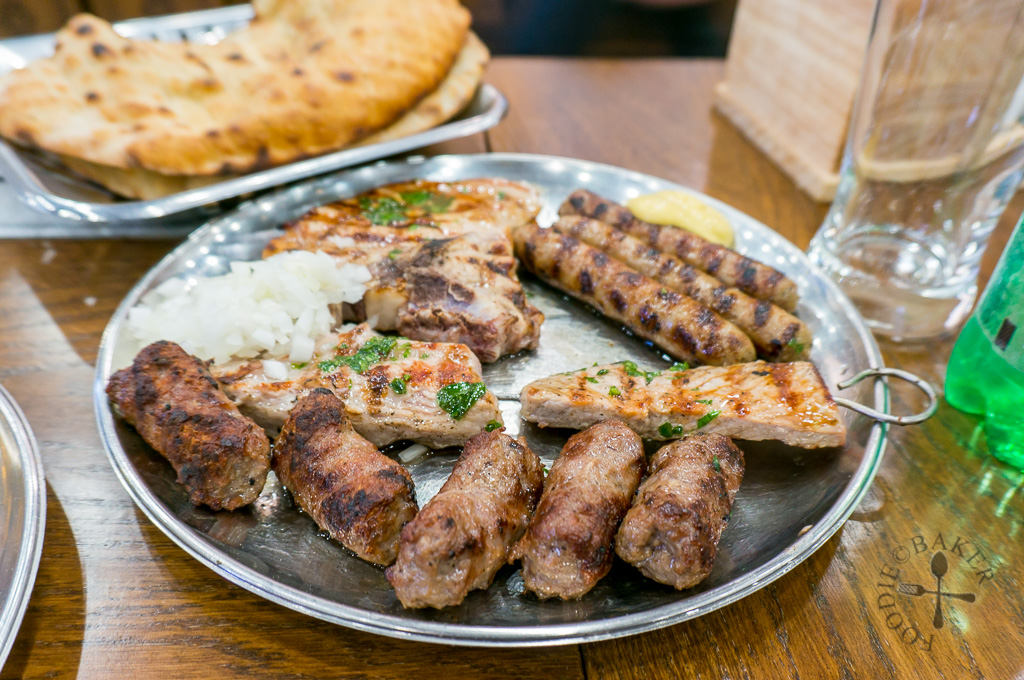
Bravadžiluk 34, 71000 Sarajevo
Daily 0700 – 2300
~BAM30 for 4 people

One can’t just have ćevapi for all 3 meals, so for dinner we stopped by Dzenita, a restaurant frequent by locals. We ordered the Barley-Veal Soup – sadly they didn’t have enough for 2 servings, so we only had two pathetic, small bowls of it – it was so incredibly delicious!
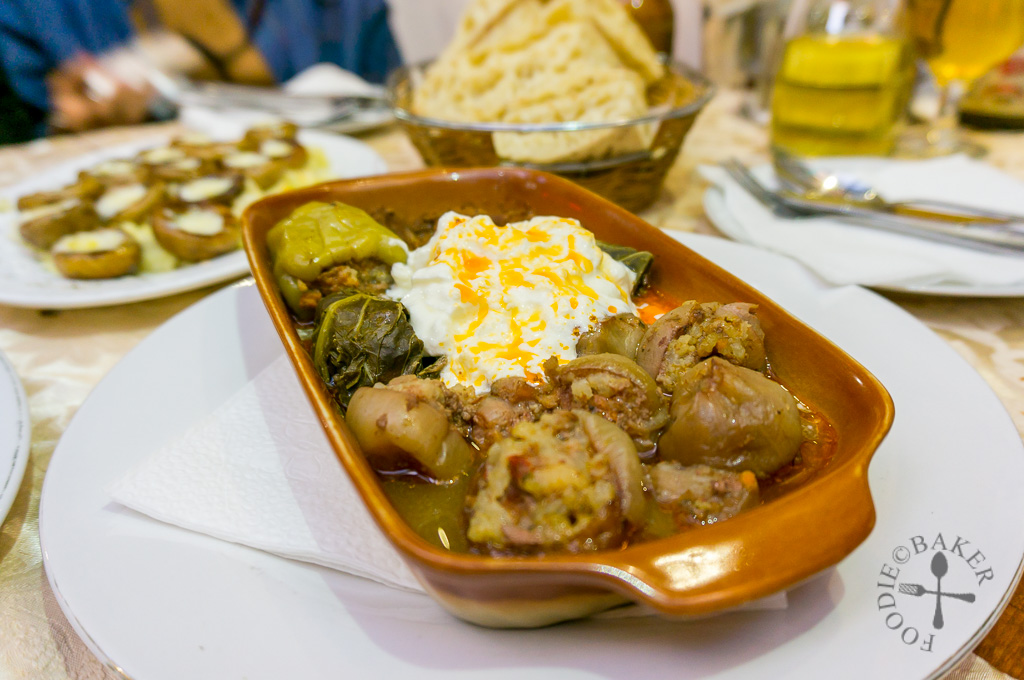
We ordered ražnjići, grilled meat on a skewer and a medley of stuffed vegetables – punjena paprika (stuffed paprika/bell peppers), sogan-dolma (stuffed onion), sarma (meat and rice rolled in pickled cabbage leaves). All were good and delicious!
Ćulhan 3, Sarajevo 71000
Daily 0800 – 2000
~BAM64 for 4 people
6) Learn about the Srebrenica Massacre at Galerija 11/07/95
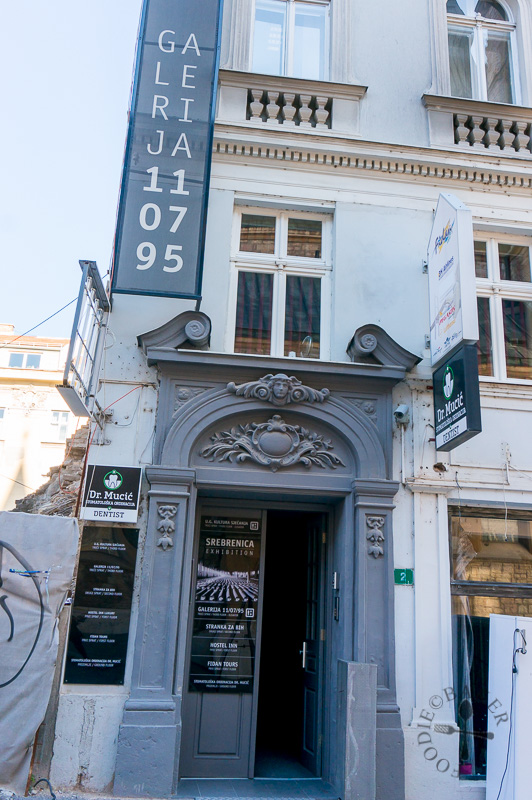
Besides the Siege of Sarajevo, the Srebrenica Massacre was another significant and disturbing event that occurred during the Bosnian War. Also known as the Srebrenica Genocide, it was the July 1995 genocide of more than 8,372 people (majority of them Muslim Bosniaks) in and around the town of Srebrenica. Gallery 11/07/95 is the first memorial gallery in Bosnia and Herzegovina which aims to preserve the memory of this tragedy and the people who perished in the massacres. The gallery consists of mainly photos and some videos, and with the help of the audio guide (not included in the entrance ticket), they gave an insight to the atrocities that happened during the massacres. We spent over an hour in the gallery, leaving with a heavy heart.
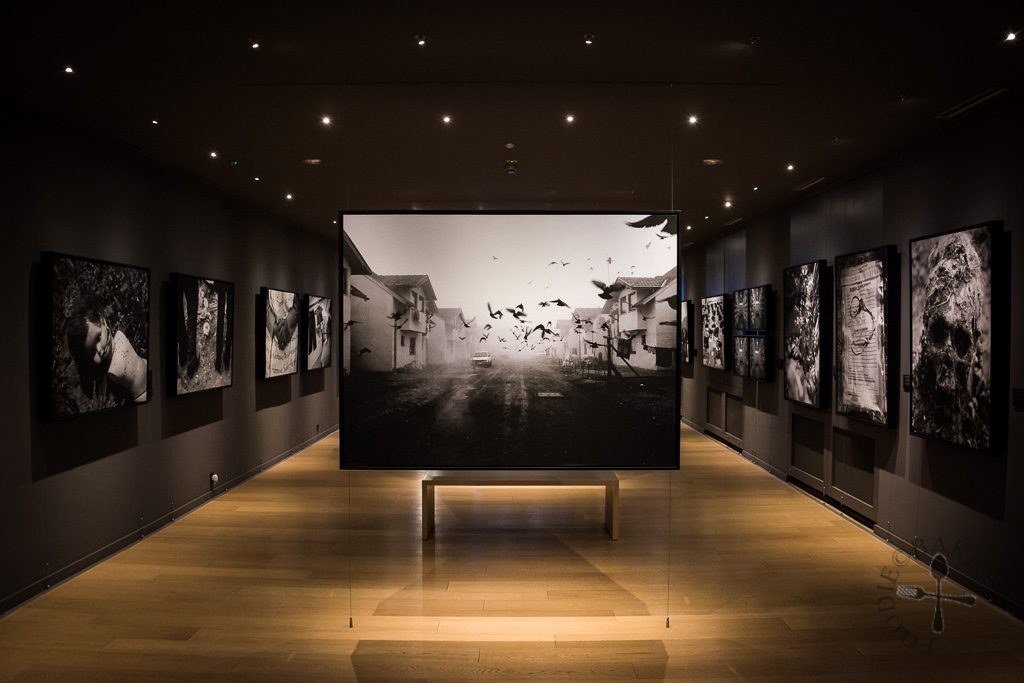
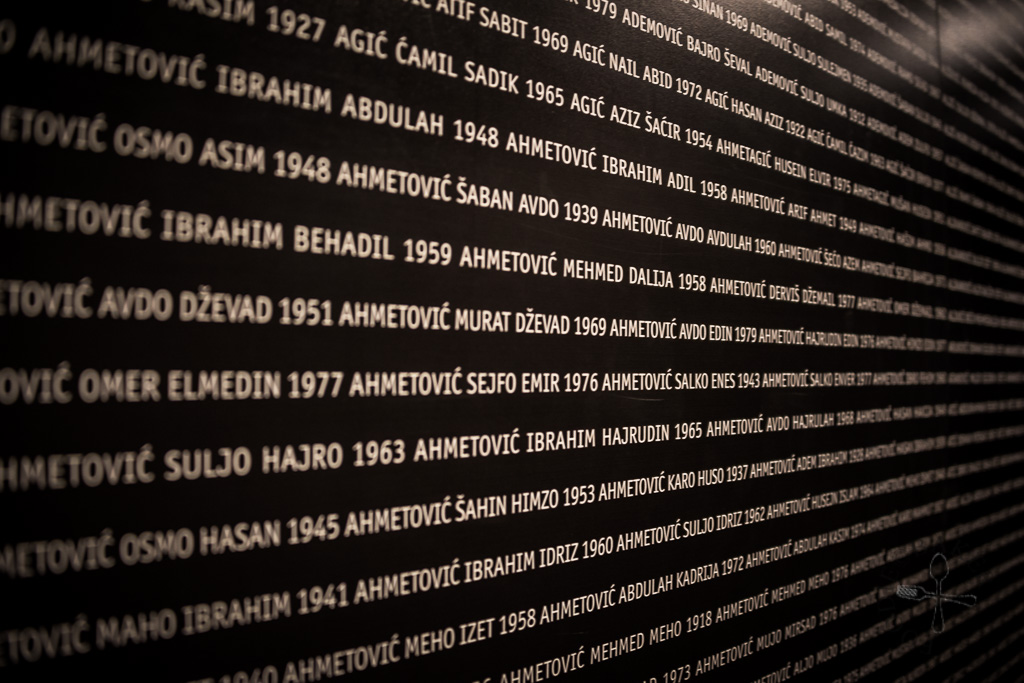
Trg fra Grge Martića 2/III, 71000 Sarajevo
Daily 1000 – 1800
BAM12 for entry; BAM3 for audio guide
7) Take a Break with Bosnian Coffee or a Beer
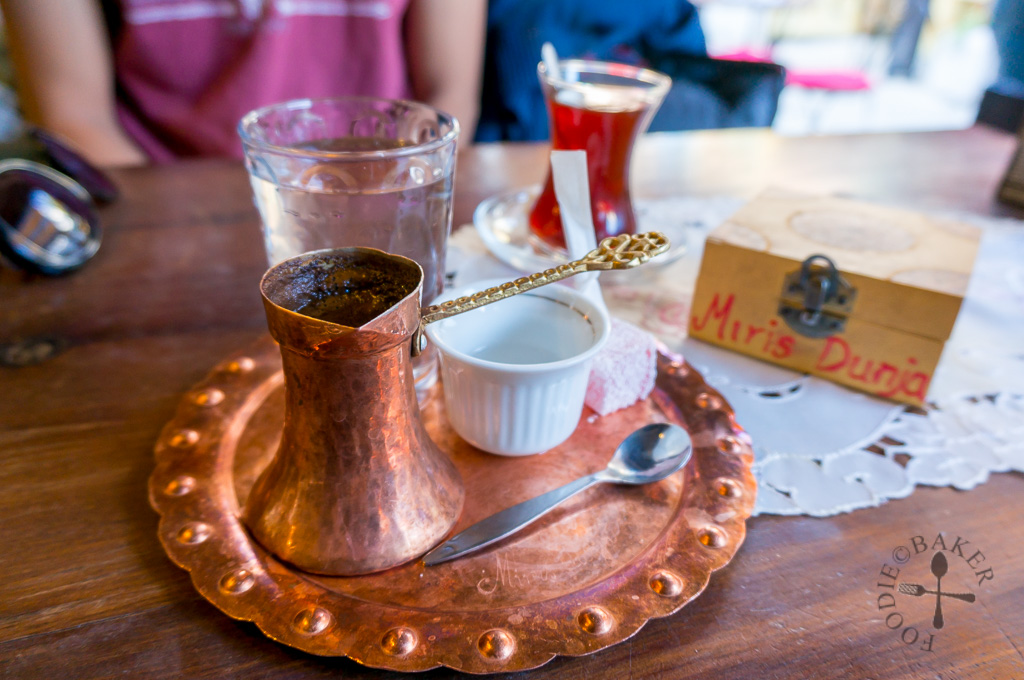
To rejuvenate ourselves after the visit to the gallery, we stopped by at Miris Dunja for some Bosnian coffee. Coffee drinking is a serious business in Bosnia and Herzegovina, so coffee houses are usually packed with people most of the time. When my Bosnian coffee came, at first glance, it looks extremely similar to Turkish coffee – after all they are both heavily influenced by the Ottomans. However, there are two differences that distinguish Bosnian coffee from Turkish coffee.
Firstly, the džezva (cezve in Turkish), the small copper-plated pot that contains the coffee, is served to guests in Bosnian coffee for guests to pour their own coffee. Whereas for Turkish coffee, the coffee is poured out into cups before serving. Secondly, sugar is added with the ground coffee while brewing Turkish coffee but for Bosnian coffee, no sugar is added – guests will add themselves to their own pot džezva of coffee.
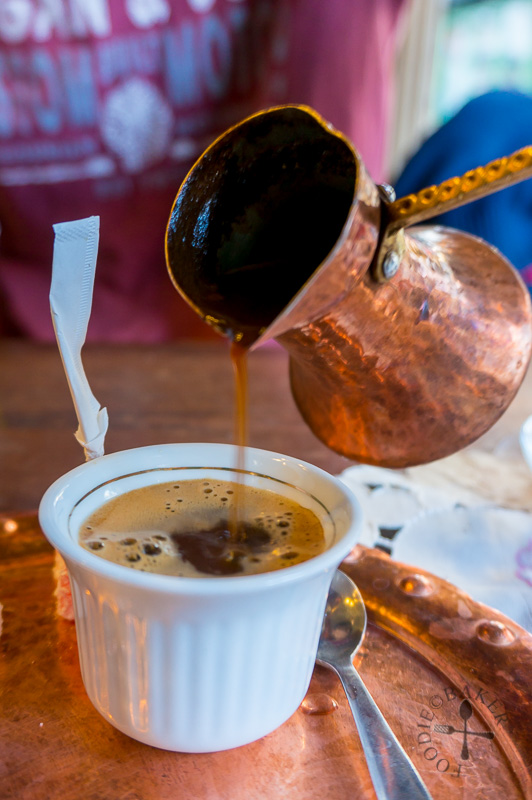
In terms of taste, to be honest, both Turkish and Bosnian coffee tasted similar to me – thick and extremely bitter. Still not my cup of coffee but a good experience nonetheless.
Čizmedžiluk 9, 71000 Sarajevo
Daily 0800 – 2300
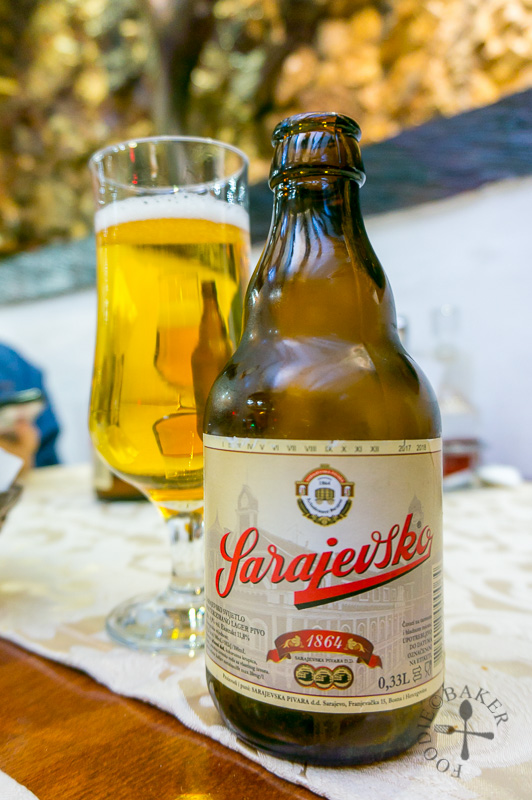
If coffee is not your thing, you may want to give beer a try – the local Sarajevsko beer is light, refreshing and cheap! The brewery is also located in Sarajevo so if you are interested you can check it out.
8) Tell the Time with Clock Tower Sahat-Kula… not
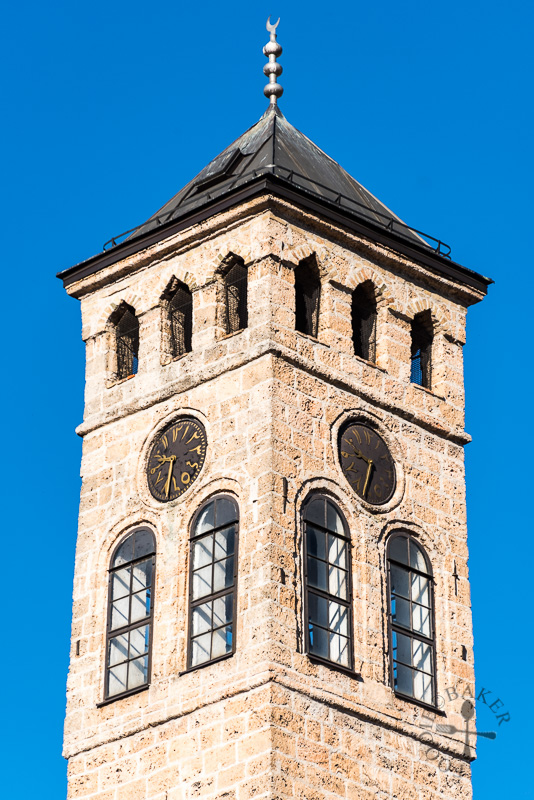
Sahat Kula is Sarajevo’s clock tower that was first built in the 17th century. After a fire burnt it down in 1697, it was rebuilt in 1762. The clock face was made in London by a UK watchmaker Gillett & Johnston in 1873. Interestingly, the clock is the only public clock in the world that tells the time a la turca, which means the lunar time. At the time of sunset in Sarajevo, the clock will strike noon (12) exactly – hence the clock has to be tuned frequently. In the courtyard of Bey’s mosque, there is a muvekithana (observatory) where the muvekit (timekeeper) will calculate the exact time.
Mudželiti veliki bb, 71000 Sarajevo
9) Shop in the Old Town
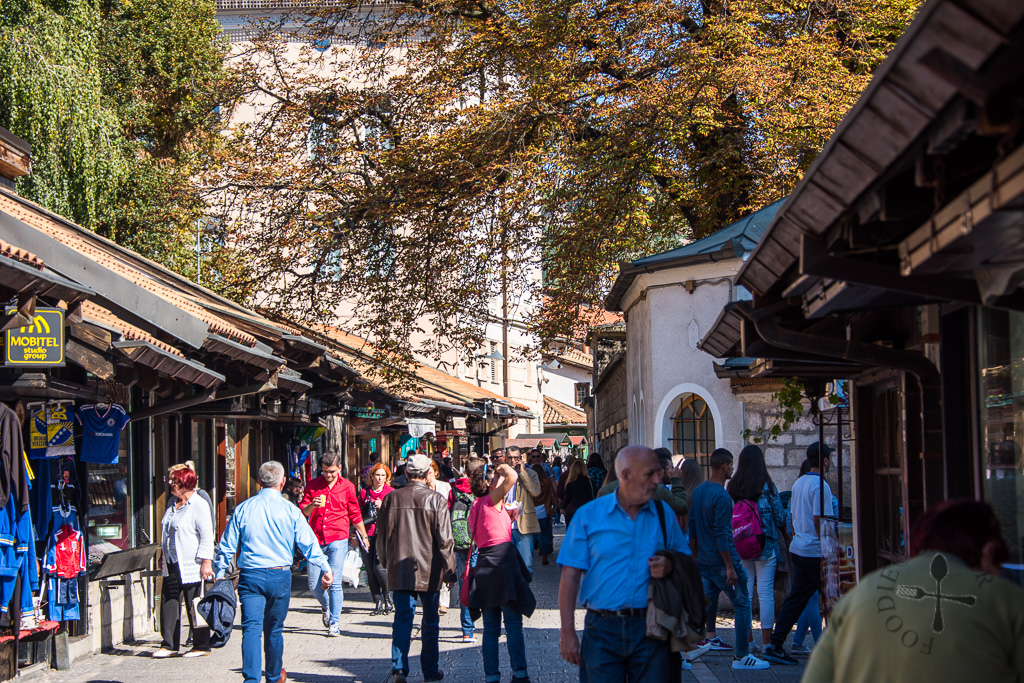
The old town of Sarajevo concentrates mainly along Bravadžiluk, Sarači and Ćurčiluk veliki streets – where you will find an abundance of food, coffee handicrafts, jewellery, souvenirs etc. We strolled along the streets, weaving in and out through the other small streets as well. There was a small street full of shops selling Bosnian coffee sets – all of them look incredibly beautiful (and a tad too pricey) so I didn’t get one in the end.
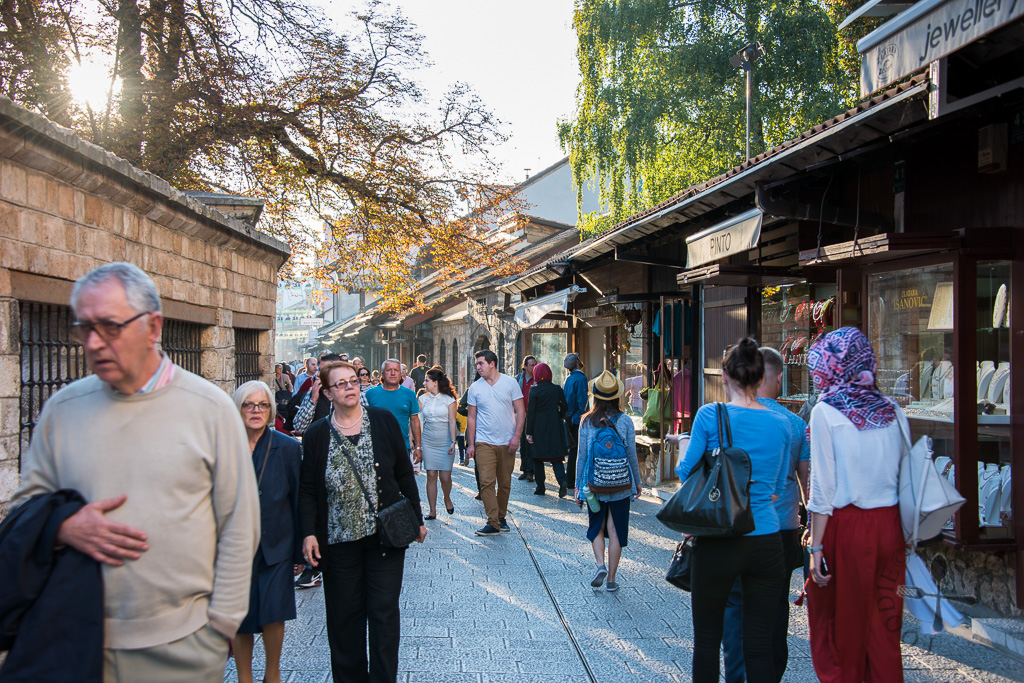
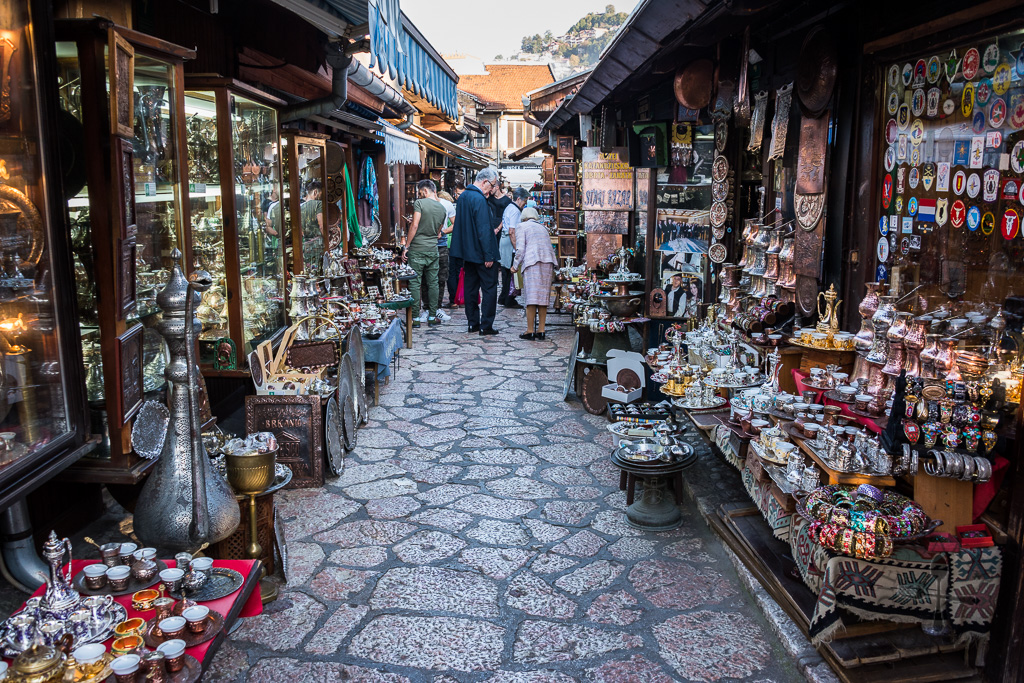
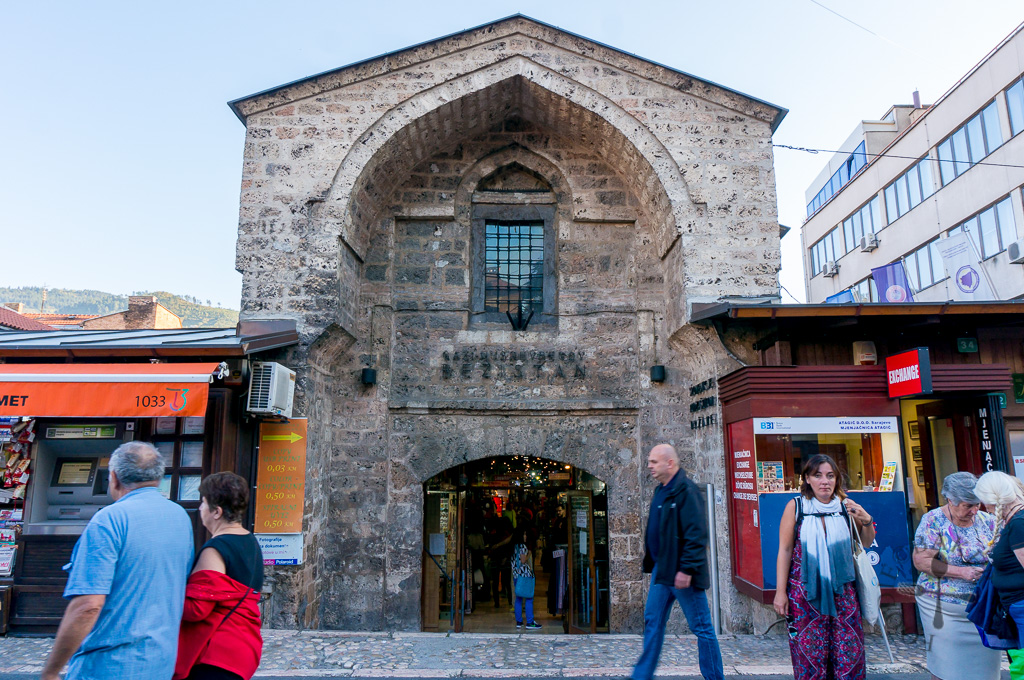
Gazi Husrev Bey’s Bezistan is a small, covered bazaar where you can find artwork, textile, jewellery and souvenirs as well. The bazaar is named after an Ottoman governor, Gazi Husrev Bey, one of the most important historical figures who helped shaped Sarajevo during the Ottoman era. He had commissioned the construction of religious buildings (mosques, monasteries and churches), a library, fountains, public baths and guesthouses and even a soup kitchen which offered free meals to the poor.
Gazi Husrev-begova, 71000 Sarajevo
Mon – Sat 0900 – 2000; closed on Sundays
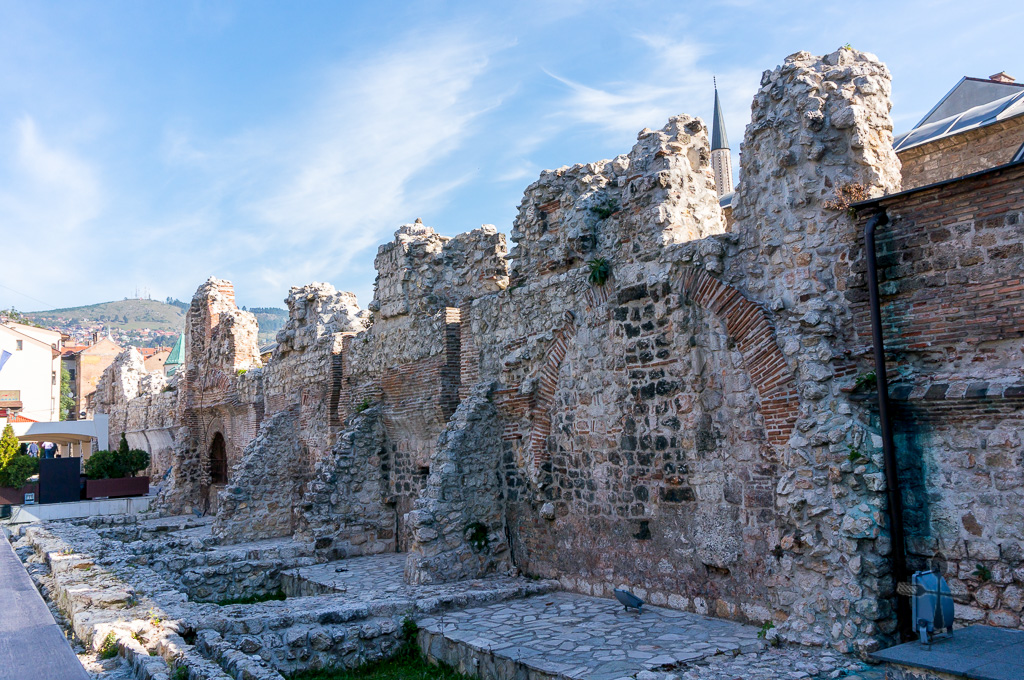
Just next to the bazaar is the remnants of a Tašlihan, a caravanserais with a large fort-like structure to accommodate caravans, horses and weary travellers. The Tašlihan above was erected between 1540 and 1543 by the Ottoman governor mentioned earlier, Gazi Husrev Bey and was subsequently destroyed by several fires in the 1800s. The remains were removed in 1912 – only the wall was preserved. Archaeological excavations that were carried out years later uncovered some of Tašlihan foundations, which travellers can now have a look at them as well.
10) People Watch at Baščaršija Square
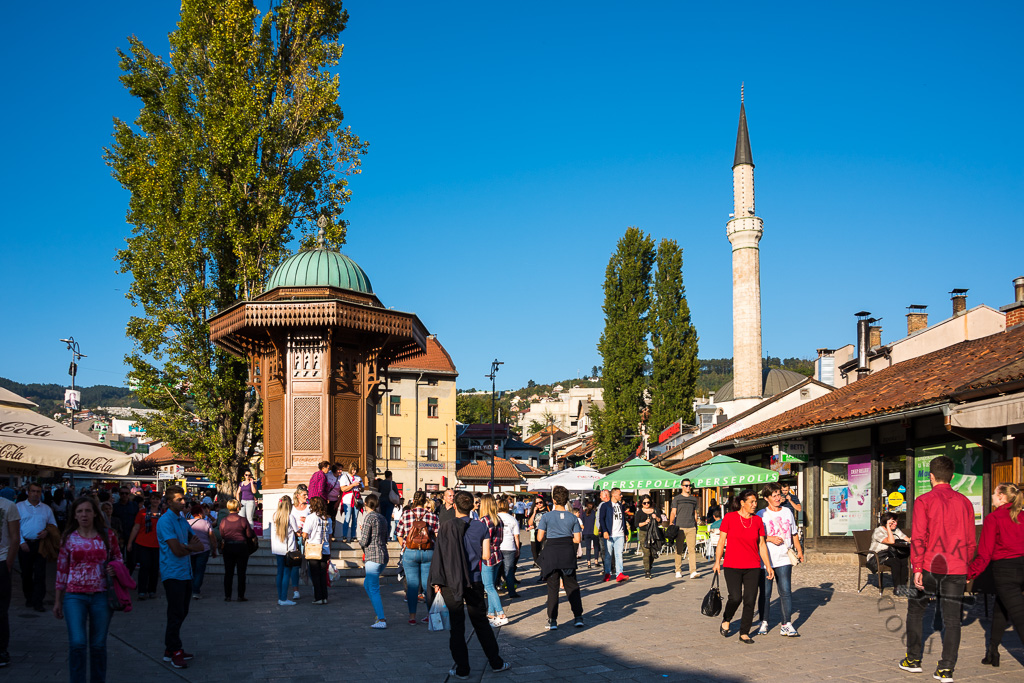
The very first inn and shops were built here in Baščaršija Square in the 1460s, which later grew and expanded to become Sarajevo’s economic center, and also the largest trading hub in the Balkans. At its peak, there were more than 12,000 shops and trading colonies set up by merchants from all over Europe! Today, the square is crowded and busy all the time, so it’s can be a nice place to people watch – though the only cafés around are touristy ones.
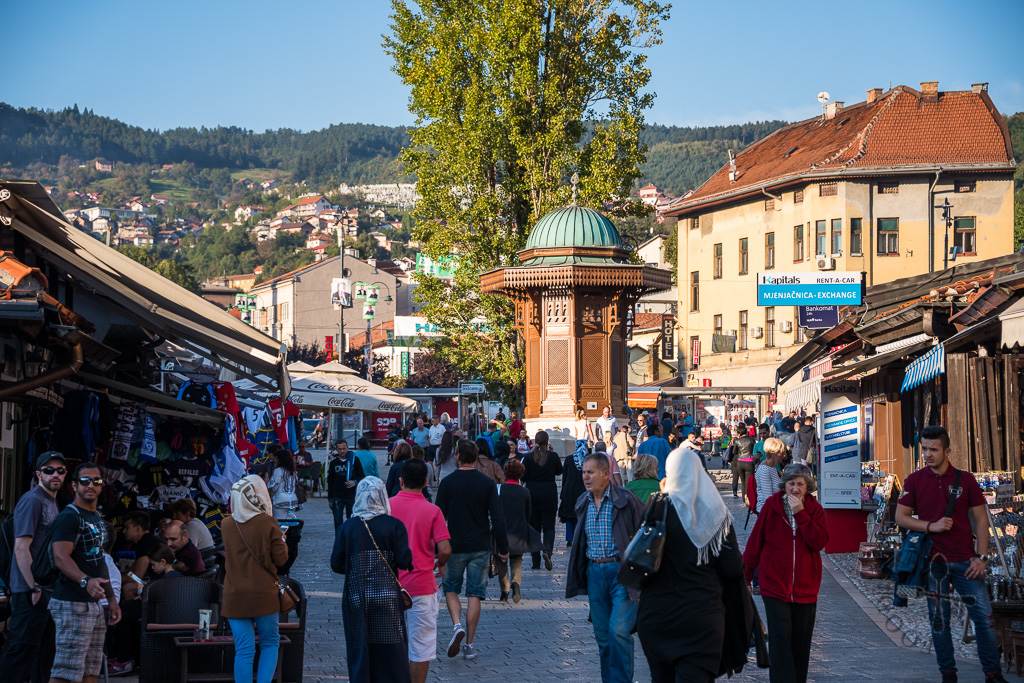
In the middle of Baščaršija Square stood a kiosk-shaped public fountain, Sebilj. There used to be many of such fountains in Sarajevo, brought about by the Ottomans to dispense free water to passer-by. Today, the one in Baščaršija Square is the only one left and has became a representative icon of Sarajevo. The original Sebilj in Baščaršija Square was built in 1754 but destroyed in a fire about a century later, and the current Sebilj was erected in 1913.
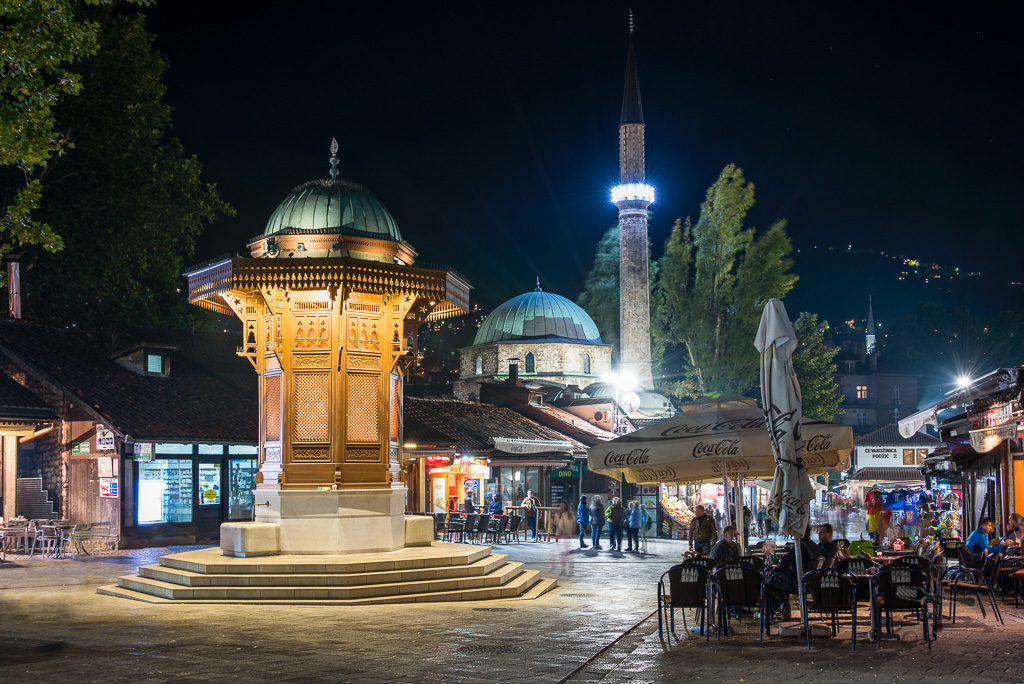
The Bey’s mosque (full name is Gazi Husrev Bey’s Mosque) was built in 1530 is regarded the most important architectural monument from the Ottoman era. If you are interested in going in for a visit, the ticket costs BAM2.
Baščaršija, 71000 Sarajevo
11) Visit the Largest Cathedral in Bosnia and Herzegovina – Sacred Heart Cathedral
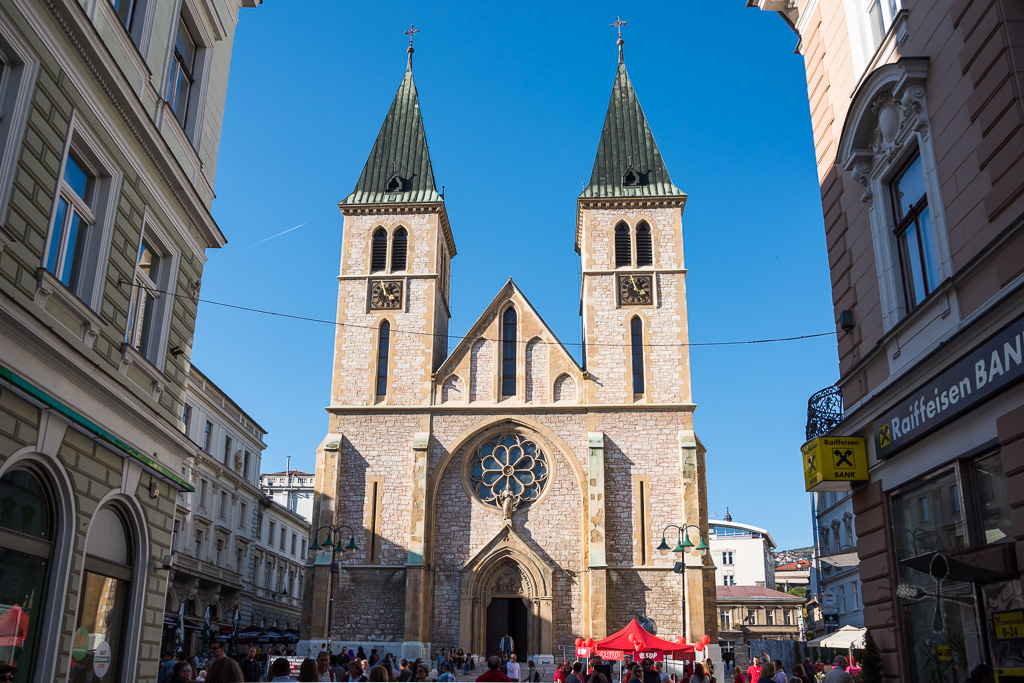
The Sacred Heart Cathedral was built during the Austro-Hungarian era from 1884 to 1887 (consecrated in 1889) in Neo-Gothic style. During the Siege of Sarajevo, the cathedral, luckily, was only damaged but not destroyed.
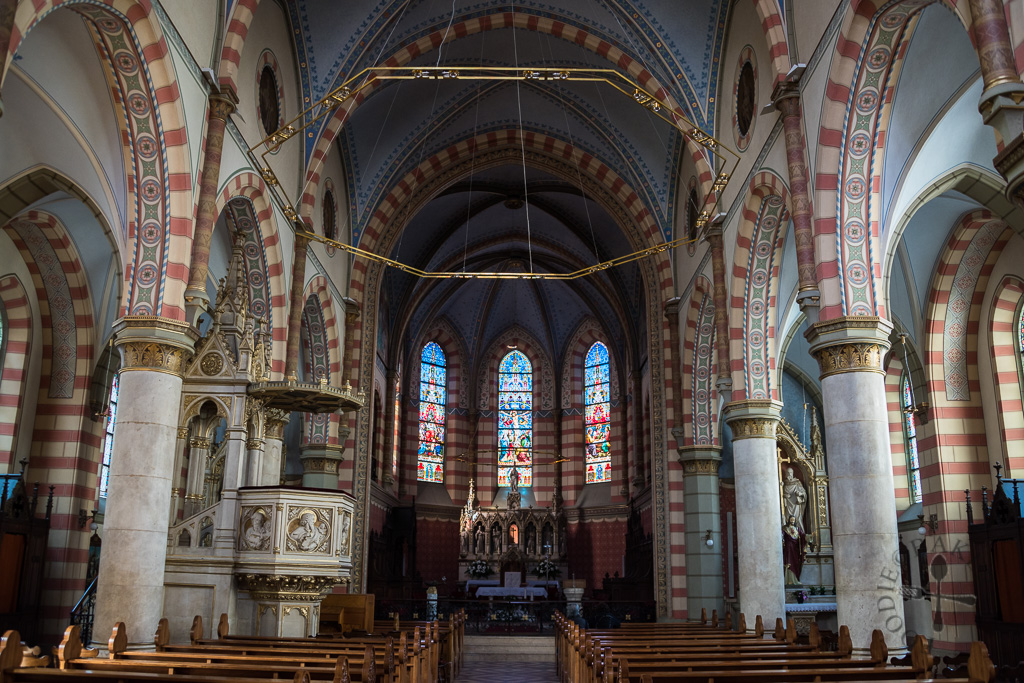
Trg Fra Grge Martića 2, 71000 Sarajevo
Summer 0900 – 1730; winter 0900 – 1500; closed on Mondays
12) Cross the Latin Bridge
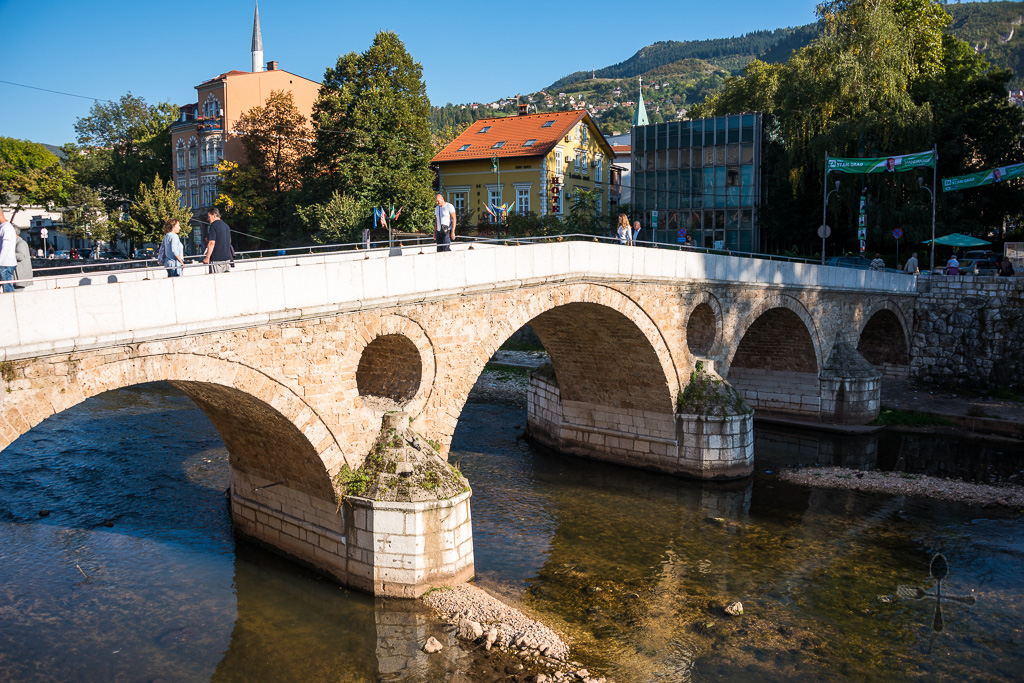
The Latin Bridge is one of the oldest bridges in Sarajevo. The original bridge was a wooden one built in 1541, but after a flood washed it away in 1791, a wealthy trader from Sarajevo donated funds to rebuild this bridge in stone. What makes this bridge significant is that the assassination of the Archduke Franz Ferdinand and his wife, Sofie, happened just a few metres from this bridge – and this assassination was the trigger of the First World War.
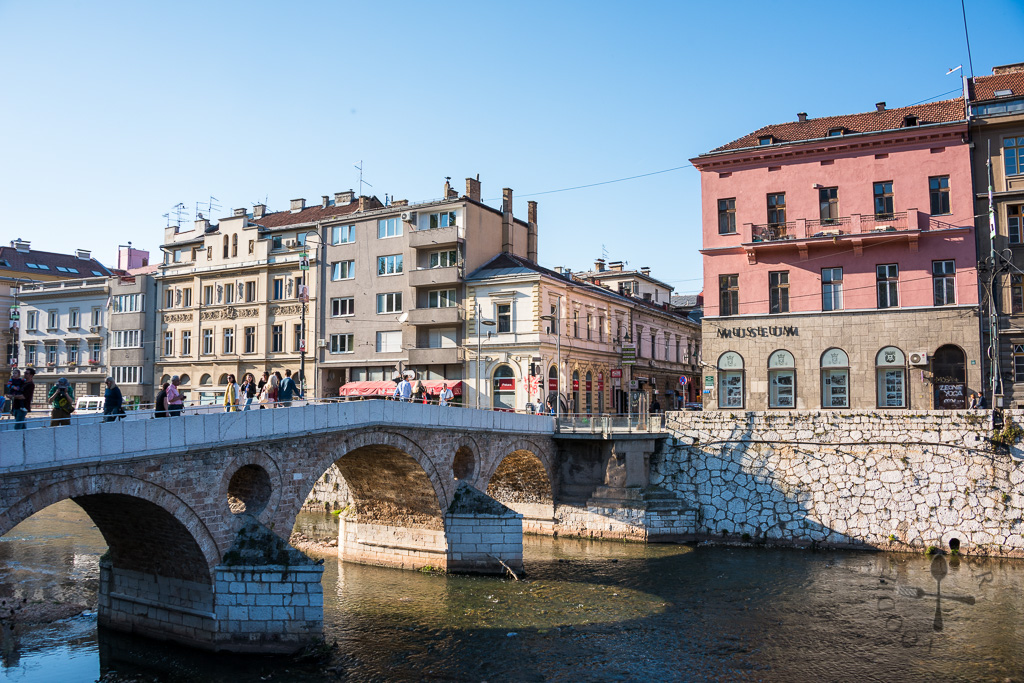
Maršala Tita, 71000 Sarajevo
13) See the Vječna Vatra (Eternal Flame)
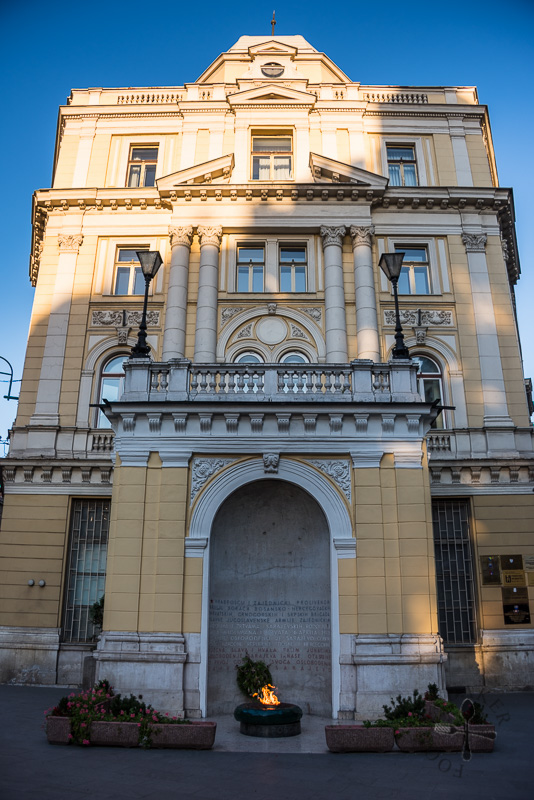
With Courage and the Jointly Spilled Blood of the Fighters of the Bosnian-Herzegovinian,
Croatian, Montenegrin, and Serbian Brigades of the Glorious Yugoslav National Army;
with the Joint Efforts and Sacrifices of Sarajevan Patriots Serbs, Muslims and Croats
on the 6th of April 1945 Sarajevo,
the Capital City of the People’s Republic of Bosnia and Herzegovina was liberated.
Eternal Glory and Gratitude to the Fallen Heroes of the liberation of Sarajevo and our Homeland,
On the First Anniversary of its Liberation–
a Grateful Sarajevo
(translation taken from Wikipedia)
Vječna Vatra means eternal flame in Bosnian and this memorial was erected in memory of those who liberated Sarajevo during World War II. The inscription on the memorial are in the colours of the former Yugoslavia flag – blue, white and red. At the base an open flame is always burning – symbolizing that Sarajevo’s liberators will forever be remembered.
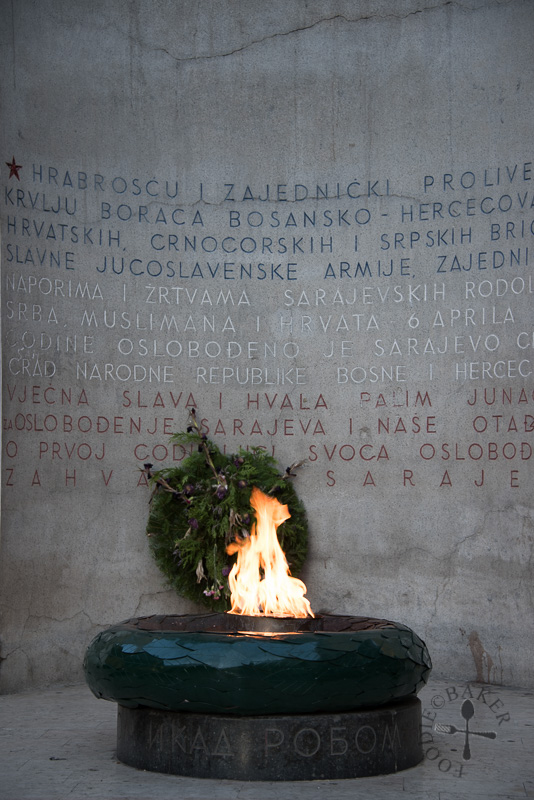
Maršala Tita, 71000 Sarajevo
14) Take a Trip to Sarajevo War Tunnel
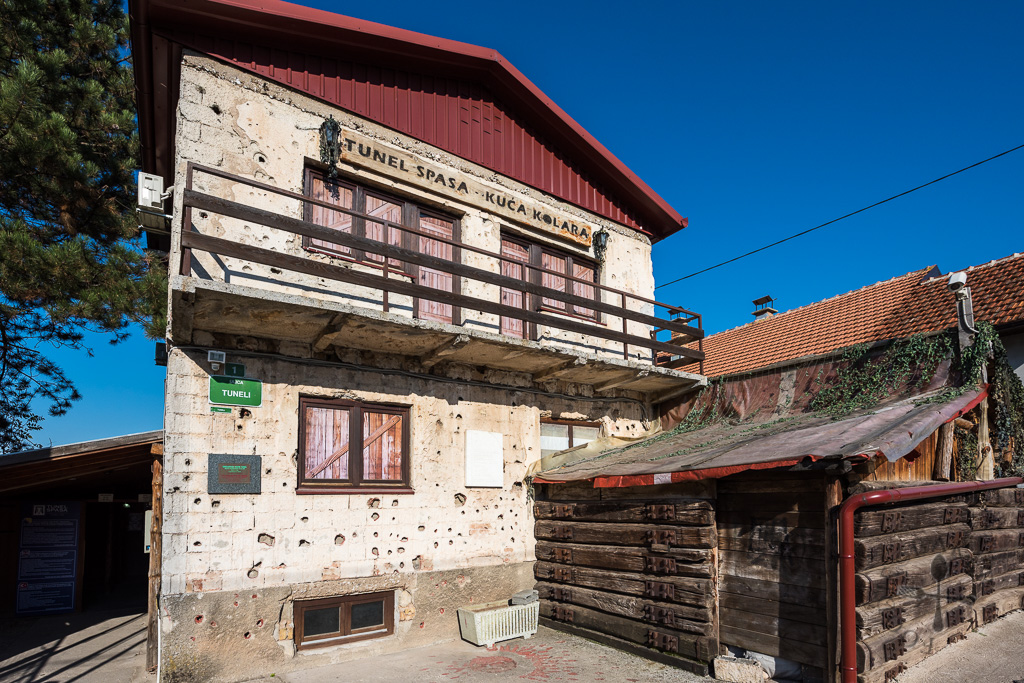
If you have time, take a trip down to Sarajevo War Tunnel – the only connection Sarajevo had with the outside world during the Siege of Sarajevo. Also known as Tunnel of Hope, the 800-metre tunnel was dug under Sarajevo airport runway under poor conditions – using only pickaxes and shovels, and with only “war candles” (containers filled with cooking oil and a wick) as the source of light in the tunnel. With this tunnel, food, war supplies, oil and humanitarian aid could enter the city, and at the same time, allowing people to get out.
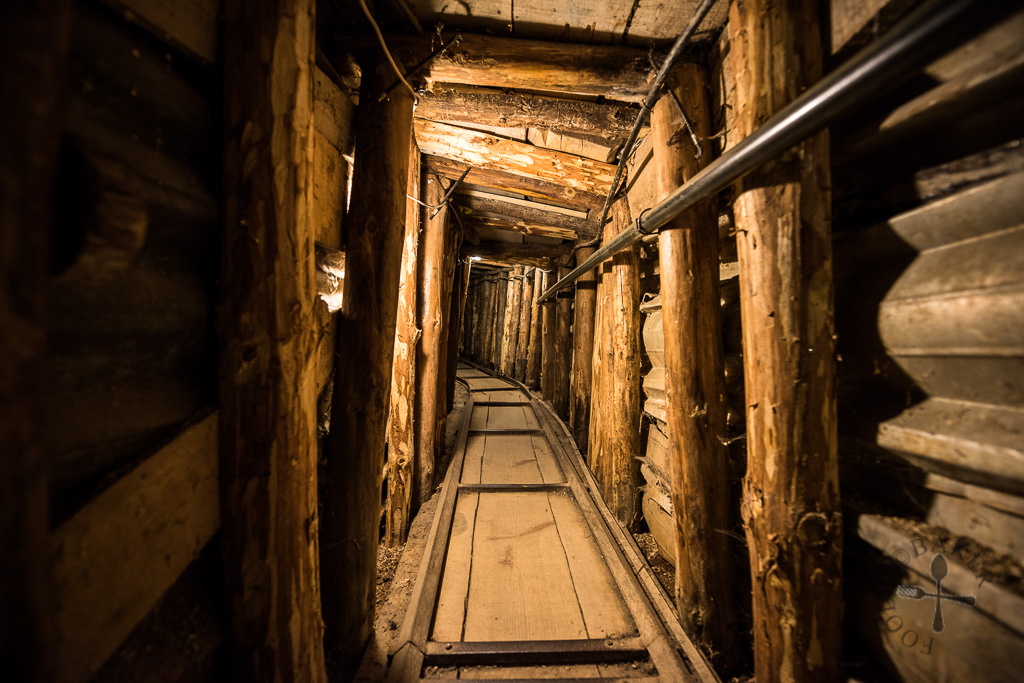
After the end of the siege, the tunnel was abandoned, and the family, the Kolar, who was living there previously before being demilitarised returned. As the government showed no interest in preserving this site, the Kolar family took matters into their hands. The tunnel was excavated, and any items salvaged from the tunnel formed a collection (now displayed in the small museum next to the tunnel). Approximately 20 metres of the tunnel is still accessible by visitors today.
The tunnel gained international attention when Tim Clancy, a New Yorker, visited the tunnel in 1993 and mentioned the visit in his tourist guide for Bosnia and Herzegovina. Since then, tourist numbers to the site began to increase and in 2010, the Sarajevo government added the tunnel into its list of protected sites.
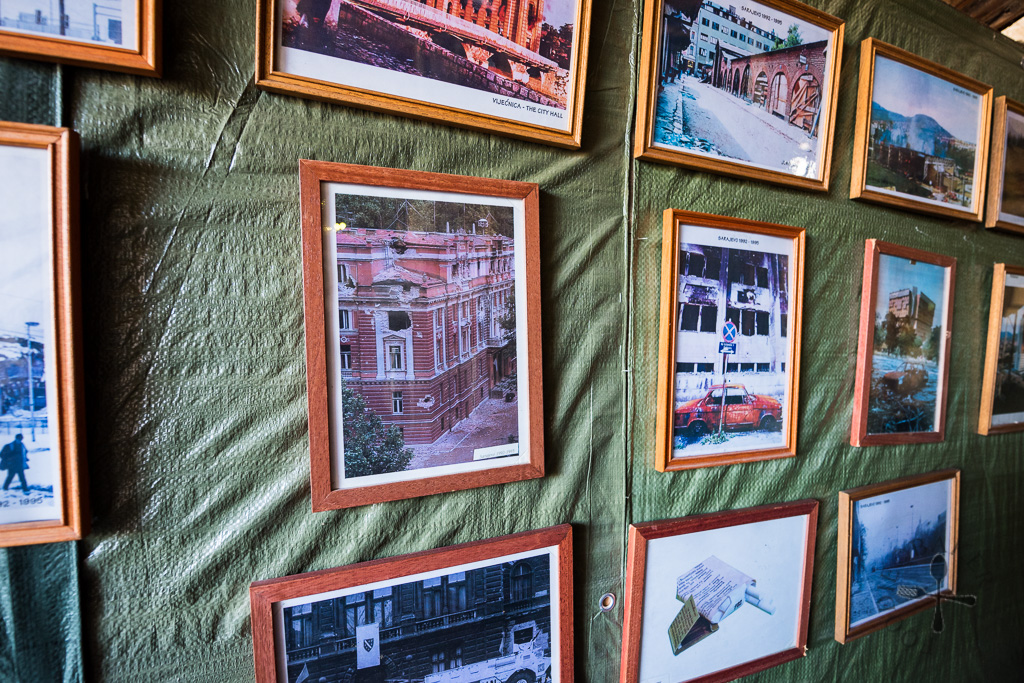
To get there, we took a taxi from Sarajevo Old Town and it cost us BAM20 (one-way). The museum is relatively small – there are a few room showing the same 18-minute footage. Free audio guide is also being provided – just bring your phone and earpieces to connect to the WiFi to listen to the guides. However, the audios are pretty long and may get a little boring, especially on a warm, late afternoon.
Tuneli 1, 71210 Ilidža – Donji Kotorac
Apr – Oct 0900 – 1700; Nov – Mar 0900 – 1600
BAM10 (BAM5 for students)
15) End the Day with Sunset at Yellow Bastion
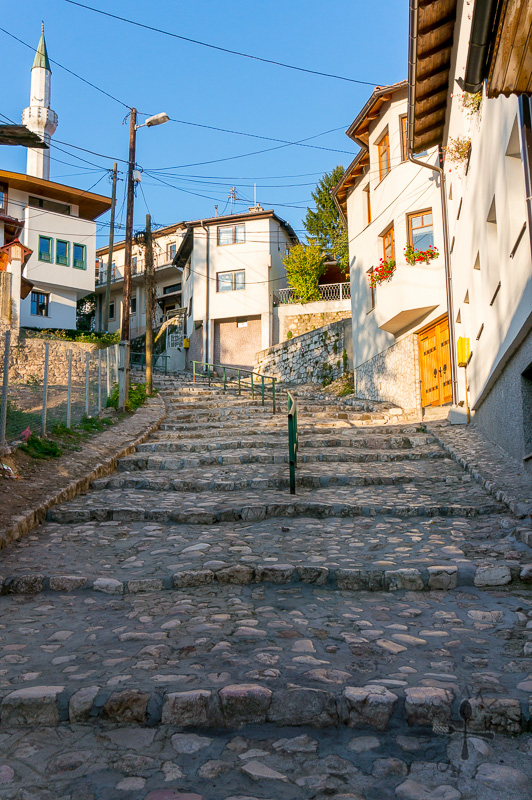
Last but not least, end the day by watching the sun set over Sarajevo (a must-do!) – and the best place to do it is at the Yellow Bastion. The Yellow Bastion, built in the 18th century, formed part of the old walls which protected Sarajevo. As you have probably guessed – it’s located on top of a hill, so be prepared to walk quite a bit!
Along the way you will pass by Sarajevo’s oldest Muslim cemetery, Kovači Šehid Cemetery, where Sarajevo’s defenders from the last war are buried, including the commander and Bosnia and Herzegovina’s first president, Alija Izetbegović.
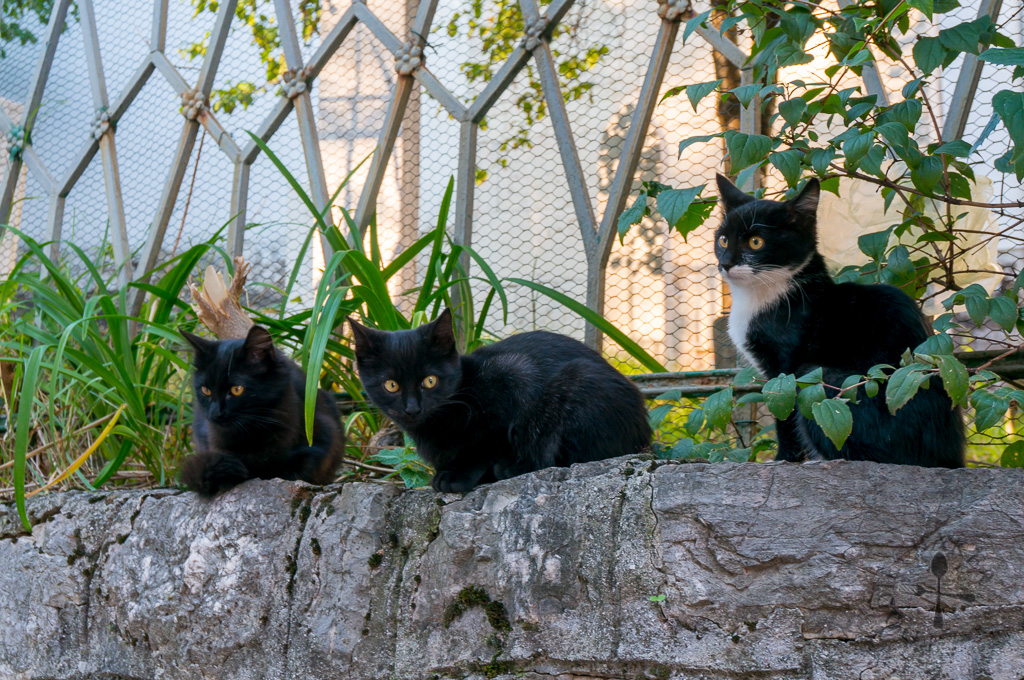
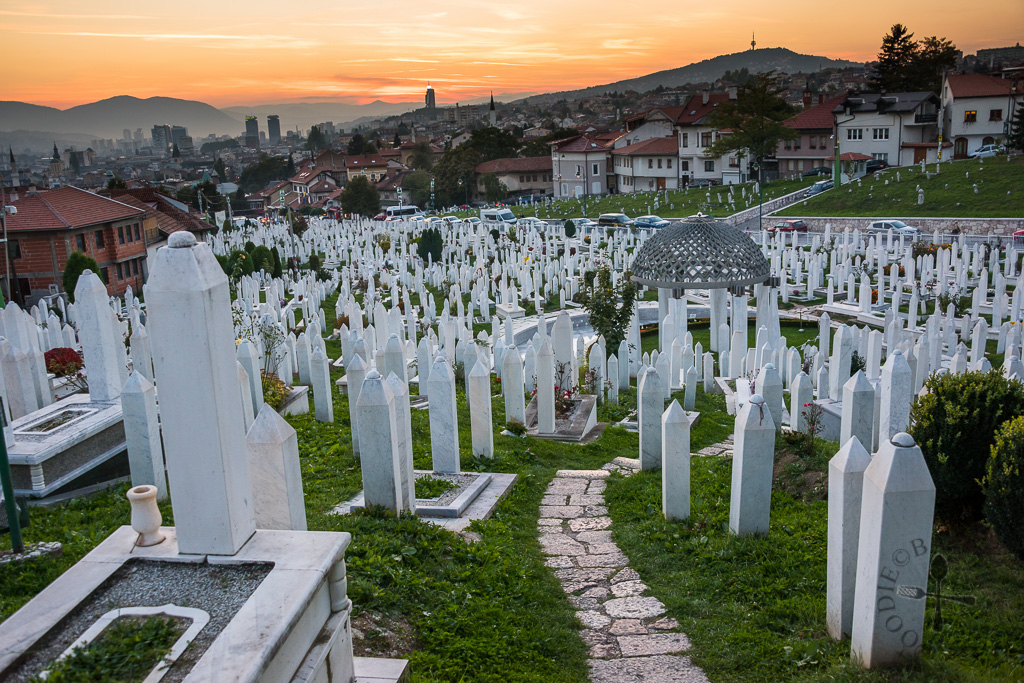
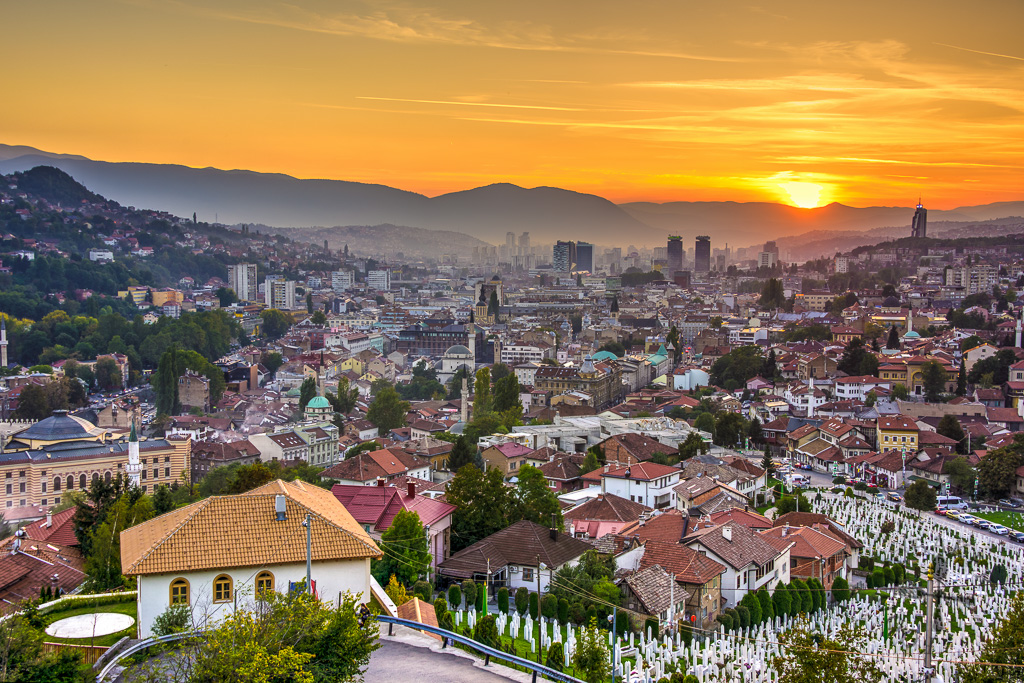
After 20 minutes of uphill climbing, we finally reached the Yellow Bastion, just in time to see the sun set behind the mountains. The Yellow Bastion is a popular place among locals, and many couples would come here to have their wedding photos taken. I suggest bringing a bottle of beer to chill out while watching the sunset! 😉
Jekovac, 71000 Sarajevo
And that’s it for Sarajevo! Check out our 25-Day Balkans itinerary in the meantime and stay tuned to the next travelogue!

Alma says
Great article! I noticed you wrote the wrong address of “Dženita” restaurant. The right address is Ćulhan 3, you can check this on Google map. 🙂
Foodie Baker says
Thanks Alma! I’ve updated the address, thank you for pointing it out! 🙂
chow says
Beautiful photos !! May I ask what camera is it?
Jasline N. says
Thanks Chow! My husband is using a Nikon D810 with 14-24mm f2.8 and 28-300mm f3.5-5.6 lens.
ellviisa says
Loved reading this!
Being from Bosnia I sometimes forget what the country and the city of Sarajevo has to offer!
Jasline N. says
Thank you Elvisa! Sarajevo is a really nice city!
Cheryl "Cheffie Cooks" Wiser says
Hi Jasline wonderful narrative and pictures, thank you for sharing!!!
Jasline N. says
Thank you for the compliments Cheryl! 🙂
Cheryl "Cheffie Cooks" Wiser says
xx